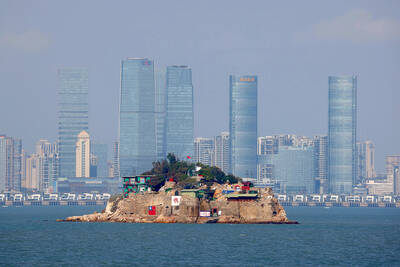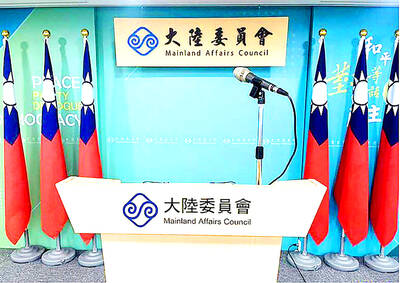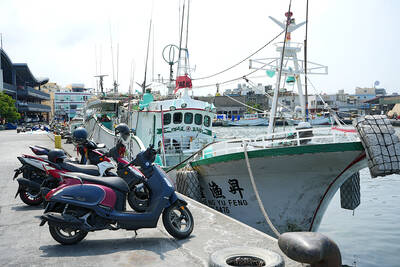The Ministry of Education’s “China-centric” adjustments to high-school curriculum guidelines seek to undermine Aboriginal history and culture, Presbyterian pastor Omi Wilang said.
Omi, an Atayal, said that Aborigines are the most qualified to address Taiwanese history, and the Chinese Nationalist Party’s (KMT) “government-in-exile” — which retreated to Taiwan from China after it lost the Chinese Civil War — is trying to reconnect with its Chinese roots at a time when Aboriginal peoples are seeking to re-establish their cultural traditions.
Taiwanese Aborigines have nothing to do with the Yangtze River and Yellow River in China, Omi said, questioning the ministry’s objective in educating Aboriginal students about Chinese and unificationist ideology.
The new guidelines are tantamount to Sinicization and aims to eliminate and assimilate Aboriginal students, which is an act of state violence, he said, adding that he was thankful to students participating in an anti-curriculum campaign.
Different Aboriginal peoples — be they Bunun, Atayal or Sediq — have different histories, cultures and customs, he said.
However, the ministry is using the state’s power to infiltrate the history and lives of Aborigines with its unificationist agenda, preventing Aboriginal students from living up to their ancestors’ legacies, he said.
Many Aboriginal peoples have lost their roots because of state violence: They know about the Yangtze River, Yellow River and Amur River in China, but do not know what the different mountains in Taiwan means to different Aboriginal communities — such as Dawu Mountain (大武山), which is sacred to the Paiwan, Yushan (玉山) to the Bunun and Dabajian Mountain (大霸尖山) to the Atayal, he said.
Those sacred mountains are where Aborigines have shaped their cultures and bred numerous generations, which should not be lost to later generations, Omi Wilang said.
Those who are educated in the new curriculum would become unrecognizable to their ancestral spirits and would be unable to cross the rainbow bridge to the hereafter, he said.
The pastor was referring to the Atayal belief that the souls of the deceased have to pass the rainbow bridge to where the spirits of their ancestors dwell, and those who do not have facial tattoos or other distinguishing marks would not be recognized by their ancestors and would fall off the bridge, unable to get into heaven or reunite with their people.
The new curriculum seeks to replace Aboriginal culture with a China-centric ideology, which is against Aborigines’ mission to pass down their history and cultural legacy, Omi said.
All people are created equal in the eyes of God, whether they are Chinese with a population of 1.3 billion or Thao — the nation’s smallest Aboriginal group with only 716 people, he said.
The curriculum should embrace pluralism and describe truthfully the history of different peoples, he said.
The Republic of China designates Oct. 25 as Taiwan’s Retrocession Day, but the date spells ruin for Aborigines, he said, adding that different peoples should respect each other and their points of view.

The Chinese Communist Party (CCP) is pushing for residents of Kinmen and Lienchiang counties to acquire Chinese ID cards in a bid to “blur national identities,” a source said. The efforts are part of China’s promotion of a “Kinmen-Xiamen twin-city living sphere, including a cross-strait integration pilot zone in China’s Fujian Province,” the source said. “The CCP is already treating residents of these outlying islands as Chinese citizens. It has also intensified its ‘united front’ efforts and infiltration of those islands,” the source said. “There is increasing evidence of espionage in Kinmen, particularly of Taiwanese military personnel being recruited by the

ENTERTAINERS IN CHINA: Taiwanese generally back the government being firm on infiltration and ‘united front’ work,’ the Asia-Pacific Elite Interchange Association said Most people support the government probing Taiwanese entertainers for allegedly “amplifying” the Chinese Communist Party’s propaganda, a survey conducted by the Asia-Pacific Elite Interchange Association showed on Friday. Public support stood at 56.4 percent for action by the Mainland Affairs Council and the Ministry of Culture to enhance scrutiny on Taiwanese performers and artists who have developed careers in China while allegedly adhering to the narrative of Beijing’s propaganda that denigrates or harms Taiwanese sovereignty, the poll showed. Thirty-three percent did not support the action, it showed. The poll showed that 51.5 percent of respondents supported the government’s investigation into Taiwanese who have

South Korean K-pop girl group Blackpink are to make Kaohsiung the first stop on their Asia tour when they perform at Kaohsiung National Stadium on Oct. 18 and 19, the event organizer said yesterday. The upcoming performances will also make Blackpink the first girl group ever to perform twice at the stadium. It will be the group’s third visit to Taiwan to stage a concert. The last time Blackpink held a concert in the city was in March 2023. Their first concert in Taiwan was on March 3, 2019, at NTSU Arena (Linkou Arena). The group’s 2022-2023 “Born Pink” tour set a

A Philippine official has denied allegations of mistreatment of crew members during Philippine authorities’ boarding of a Taiwanese fishing vessel on Monday. Philippine Bureau of Fisheries and Aquatic Resources (BFAR) spokesman Nazario Briguera on Friday said that BFAR law enforcement officers “observed the proper boarding protocols” when they boarded the Taiwanese vessel Sheng Yu Feng (昇漁豐號) and towed it to Basco Port in the Philippines. Briguera’s comments came a day after the Taiwanese captain of the Sheng Yu Feng, Chen Tsung-tun (陳宗頓), held a news conference in Pingtung County and accused the Philippine authorities of mistreatment during the boarding of